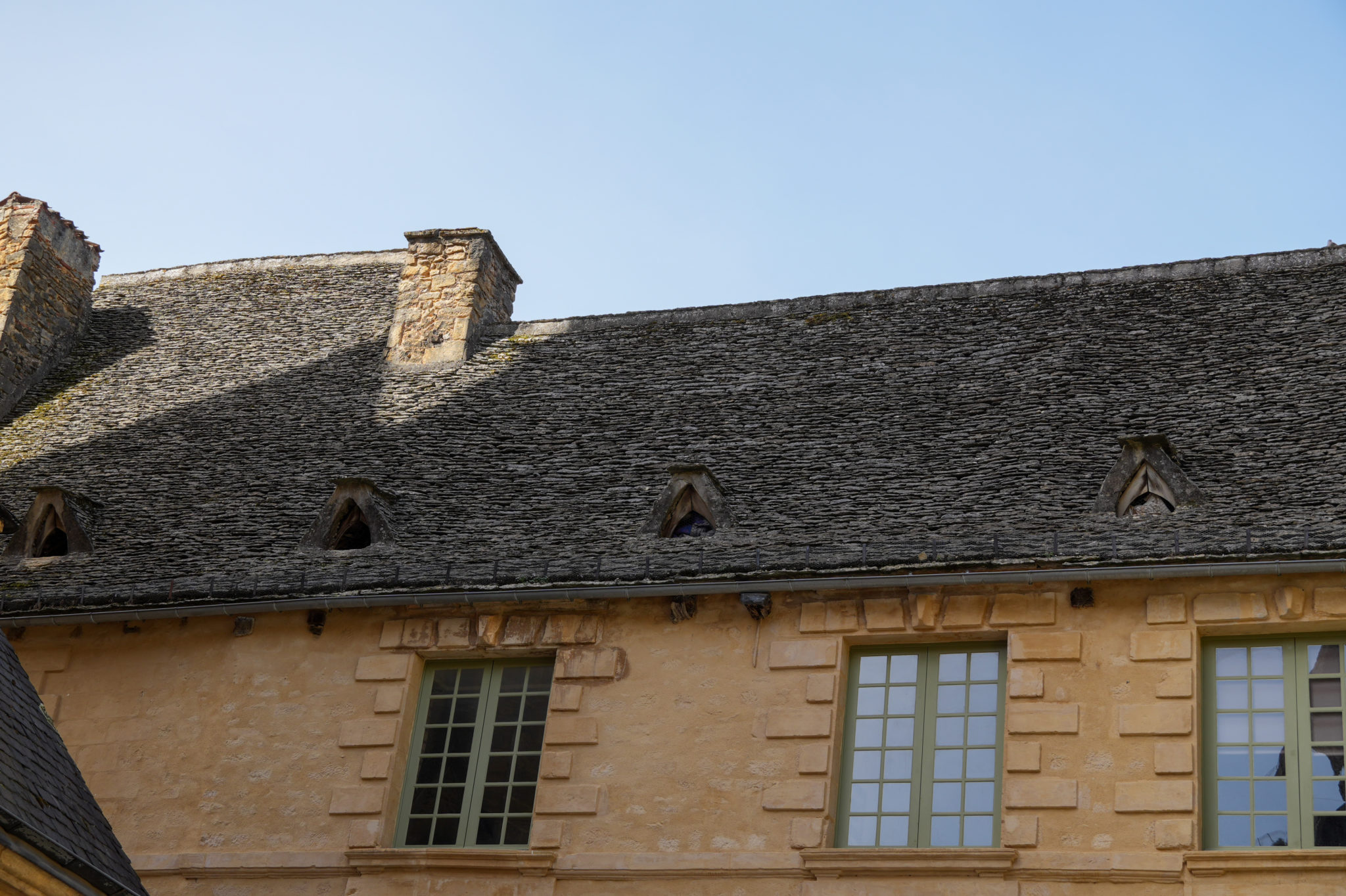
The hub of this part of the Dordogne region is the town of Sarlat-la-Canéda. I’ll call it Sarlat from now on. As everyone’s favorite American tourist, Rick Steves, says, there’s nothing “special” about Sarlat, its appeal comes from having a large, well-preserved medieval center. in case you’

The hub of this part of the Dordogne region is the town of Sarlat-la-Canéda. I’ll call it Sarlat from now on. As everyone’s favorite American tourist, Rick Steves, says, there’s nothing “special” about Sarlat, its appeal comes from having a large, well-preserved medieval center.
in case you’re wondering about the look of the S in the photo above, it’s a stylized salamander, the symbol of the city.
Let’s take a look around, shall we?
Walking from where we parked the car, I spotted this. Seems rather downmarket for a philharmonic. 😀

This is the notably italian-looking face of the Saint Sacerdos Cathedral. They say this was due to the influence of the Bishop, an Italian, in one of several remodels. He also had the good fortune to be the “boyfriend” of the French queen.
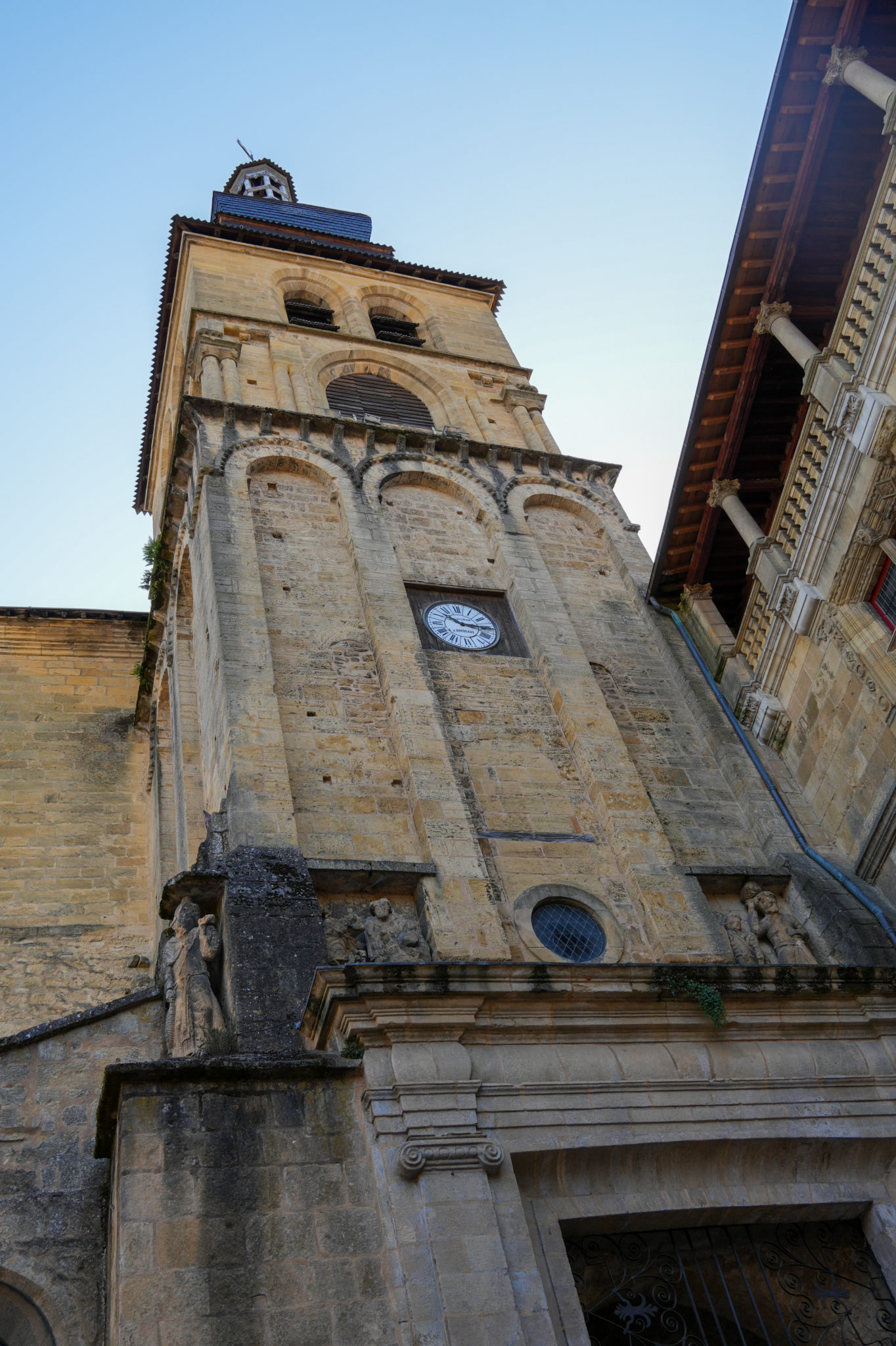
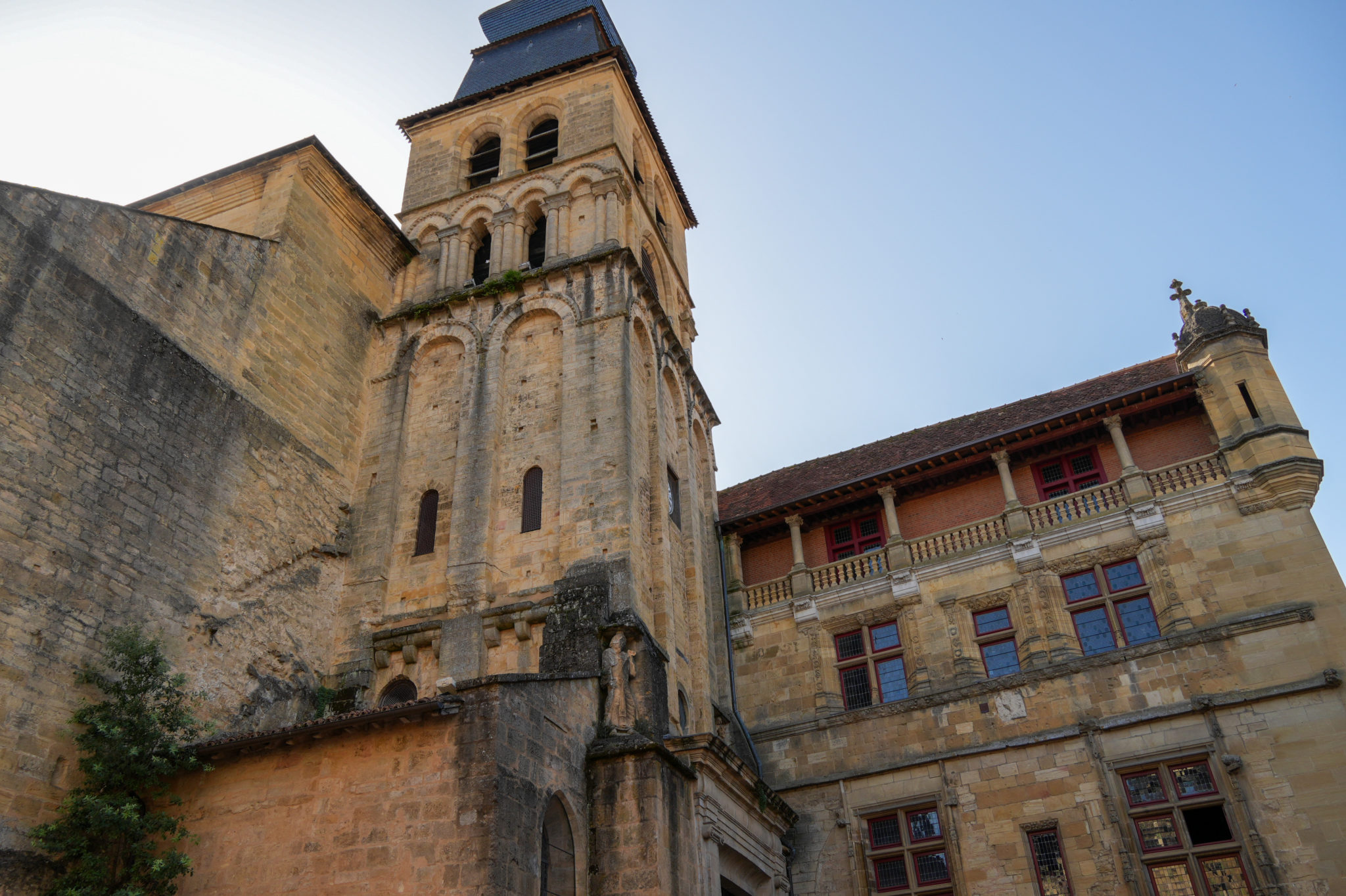

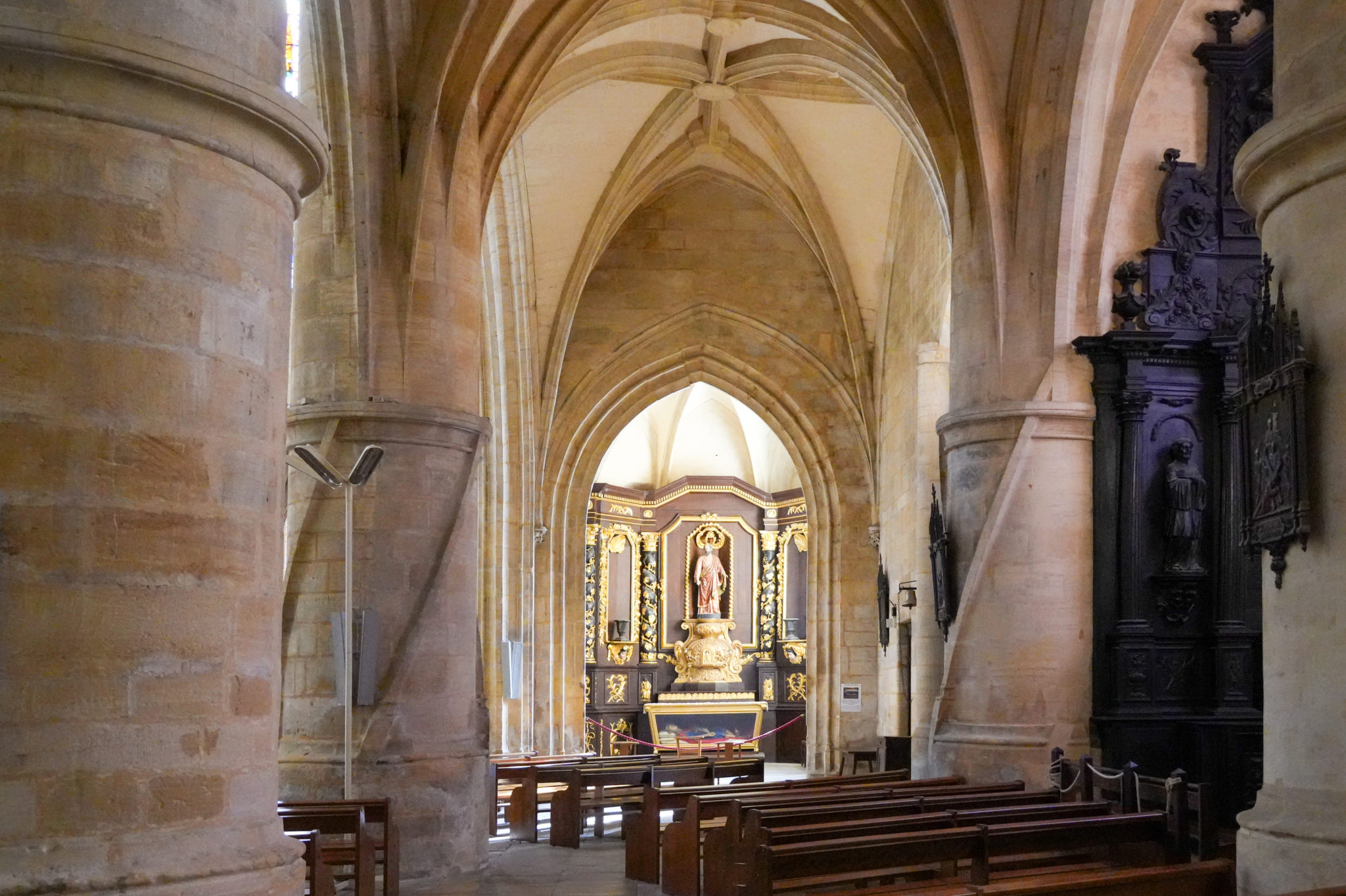

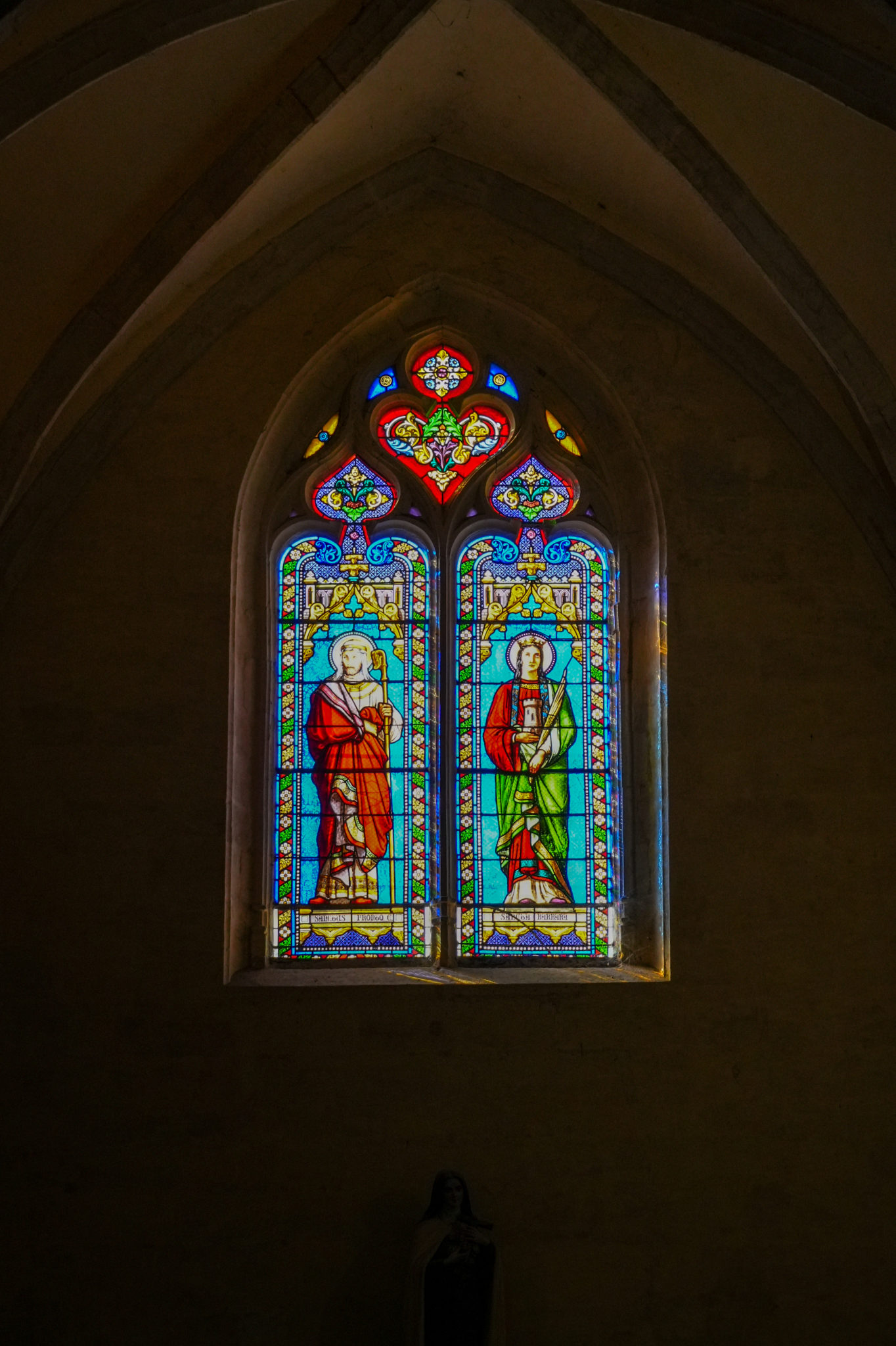
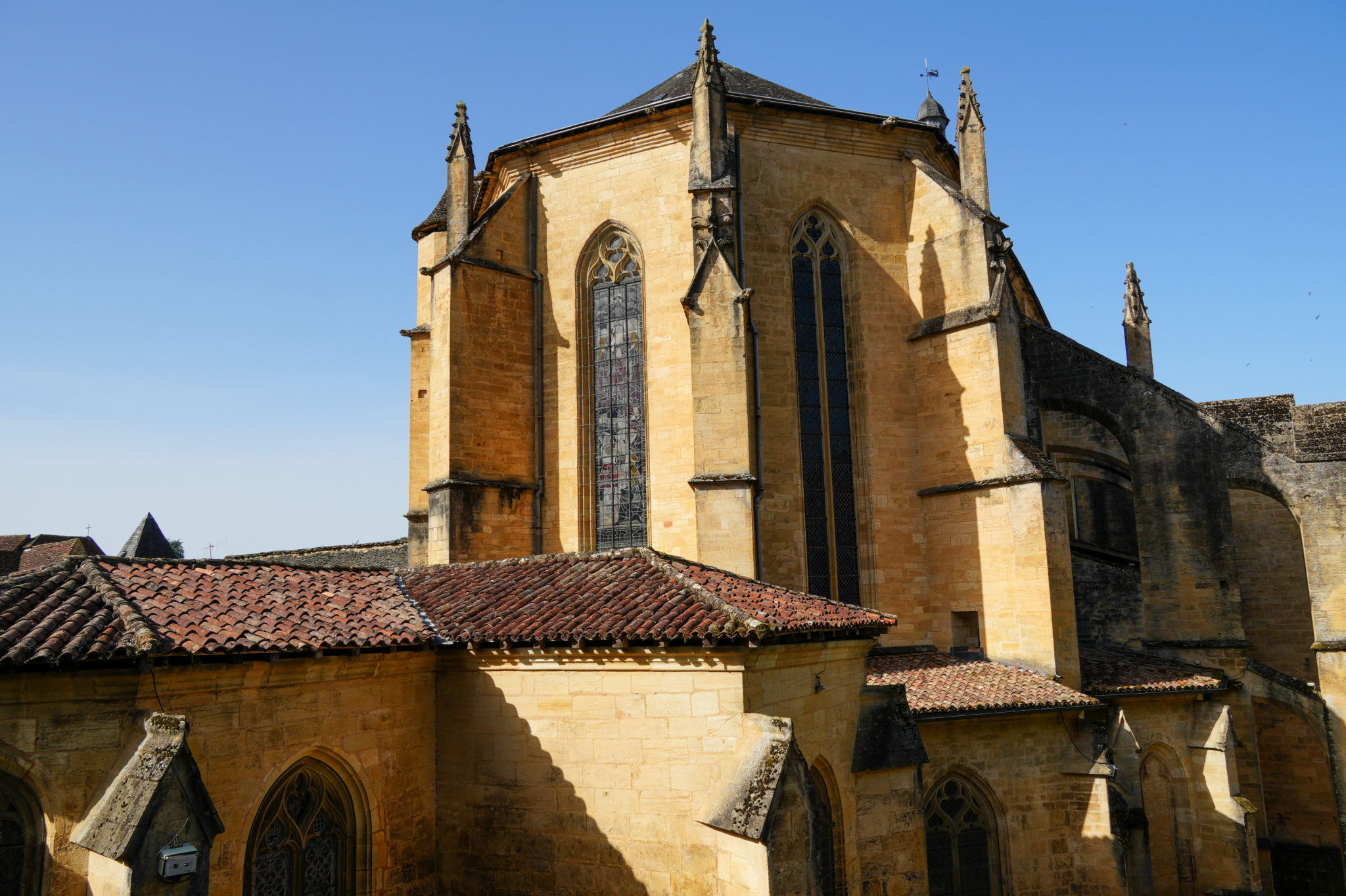
The Bishop’s residence, across the road.

This odd structure is the Lantern of the Dead (La Lanterne des Morts). It was built to honor those who perished in a particularly bad outbreak of the plague. In a matter of days, one thousand people – a quarter of the population – died.
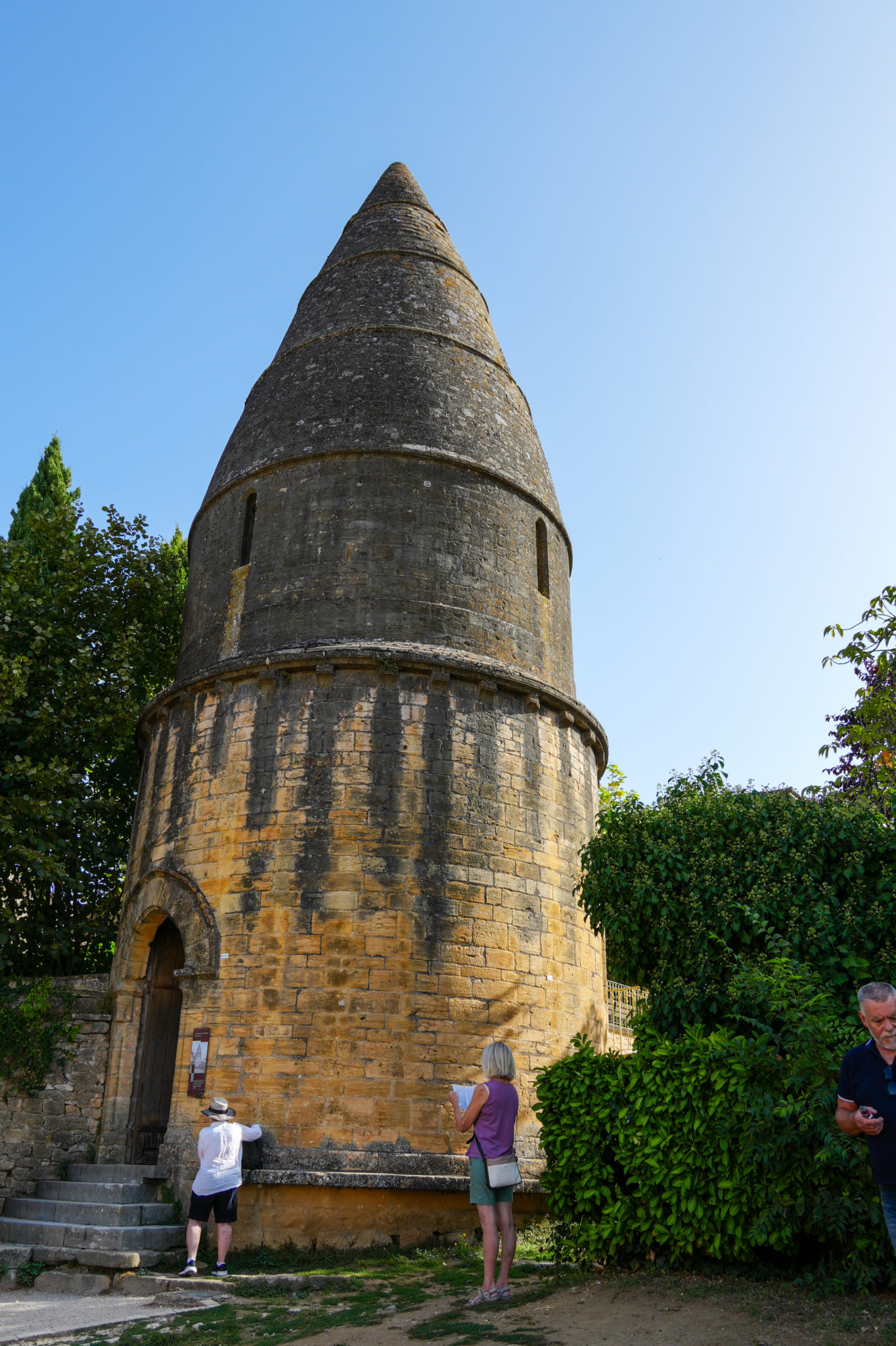
Note the thickness of the roof.
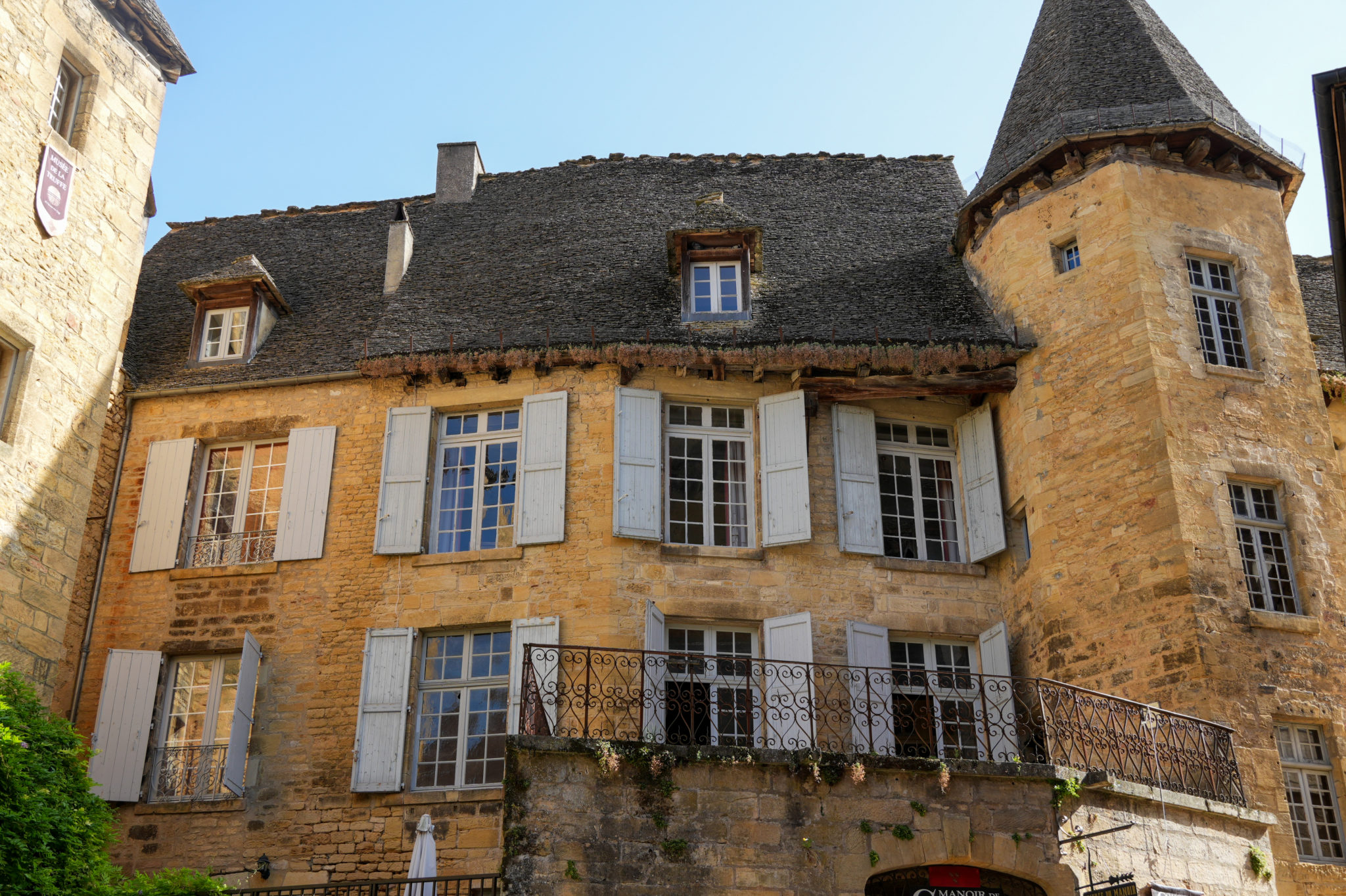
This old church is now the public market. A small market with the largest doors I’ve seen in some time.
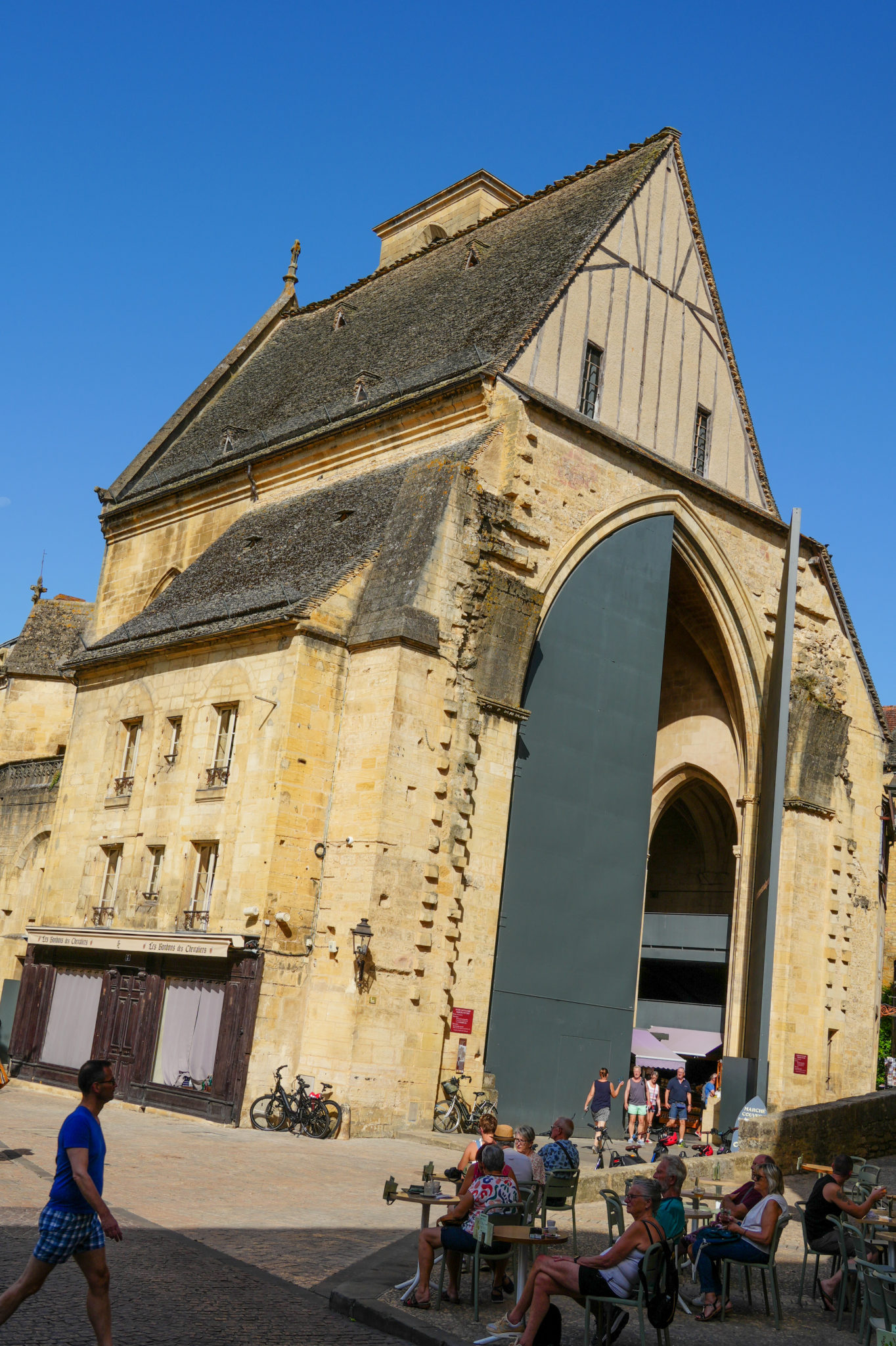
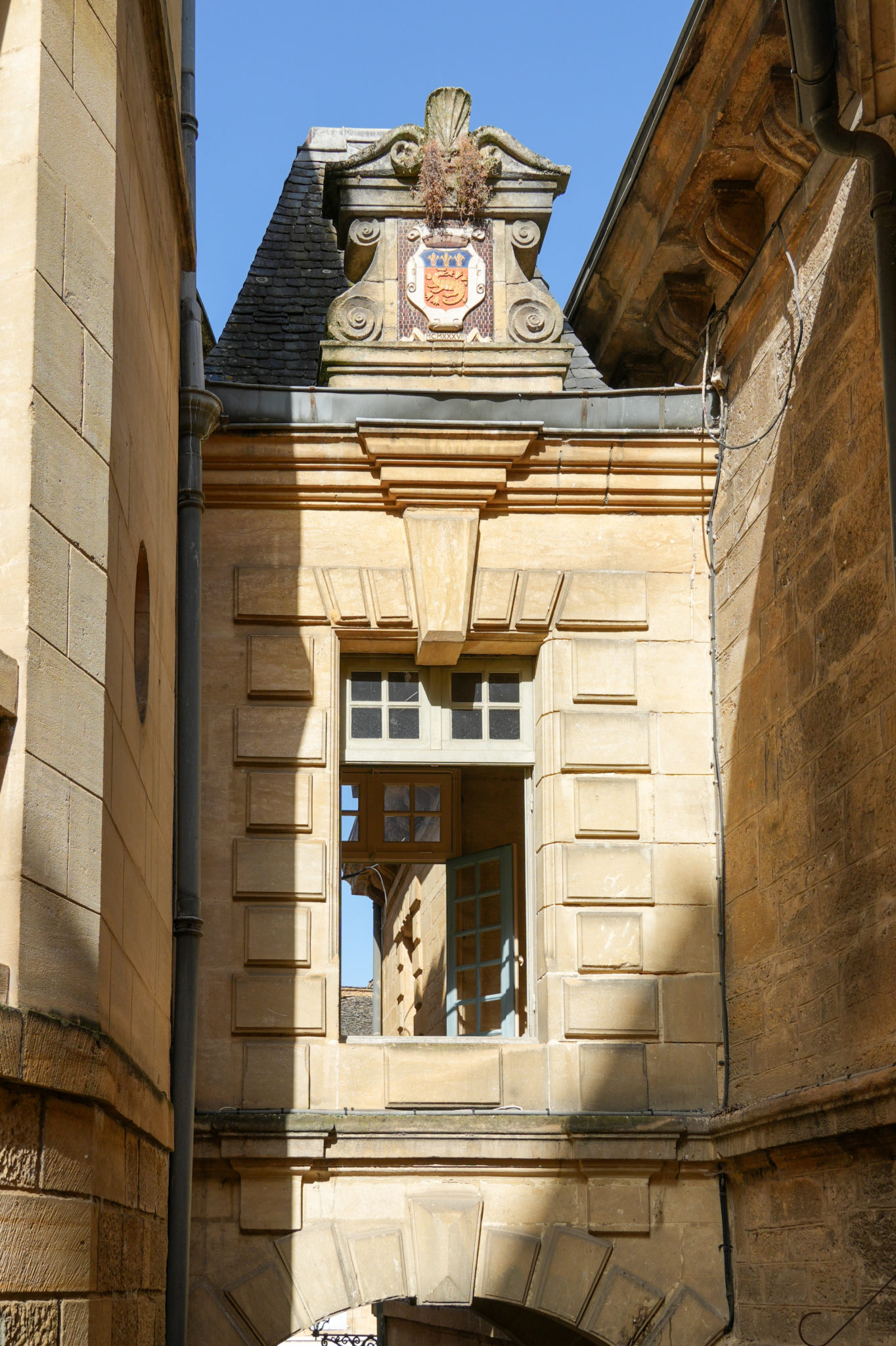

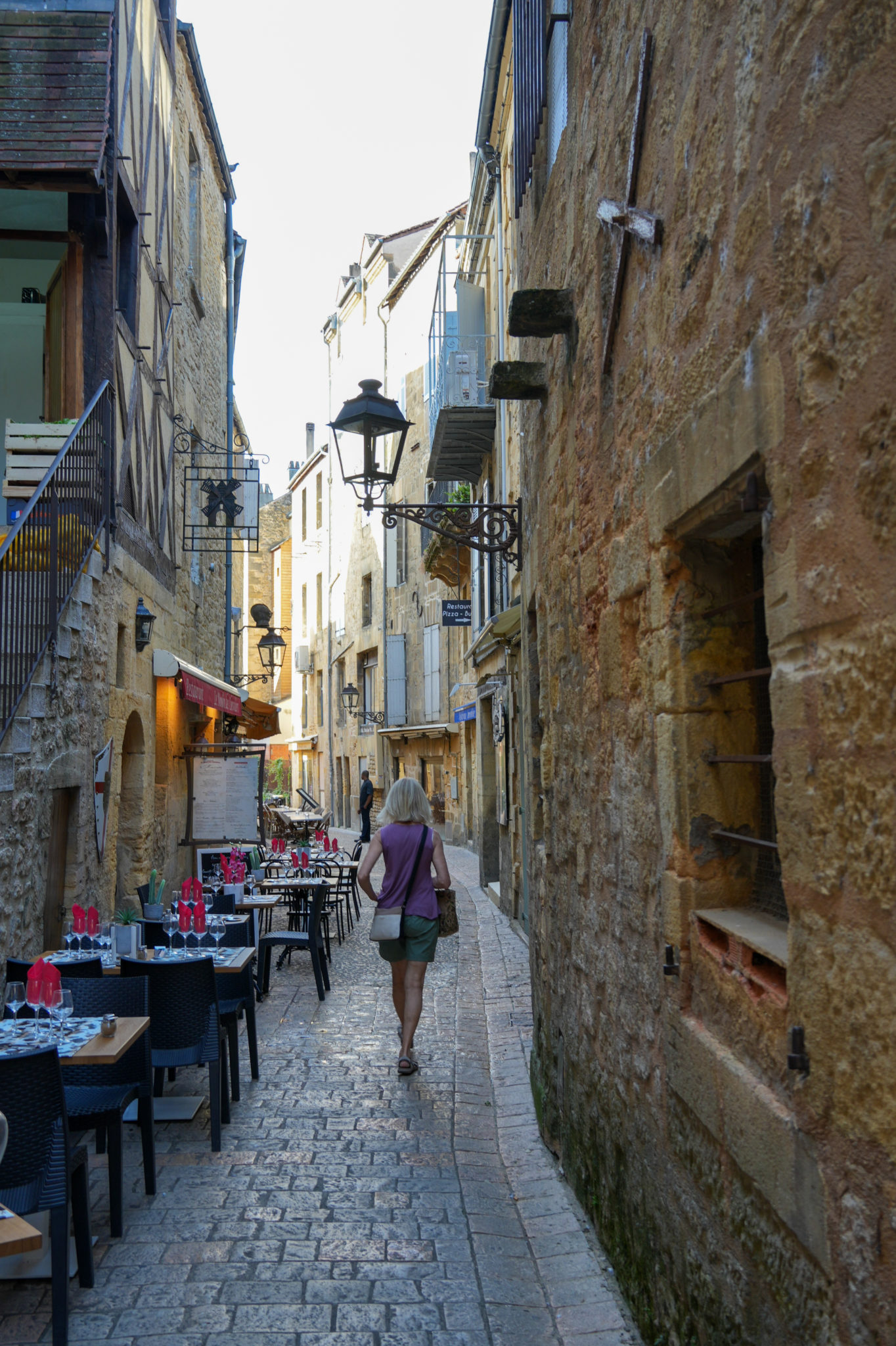
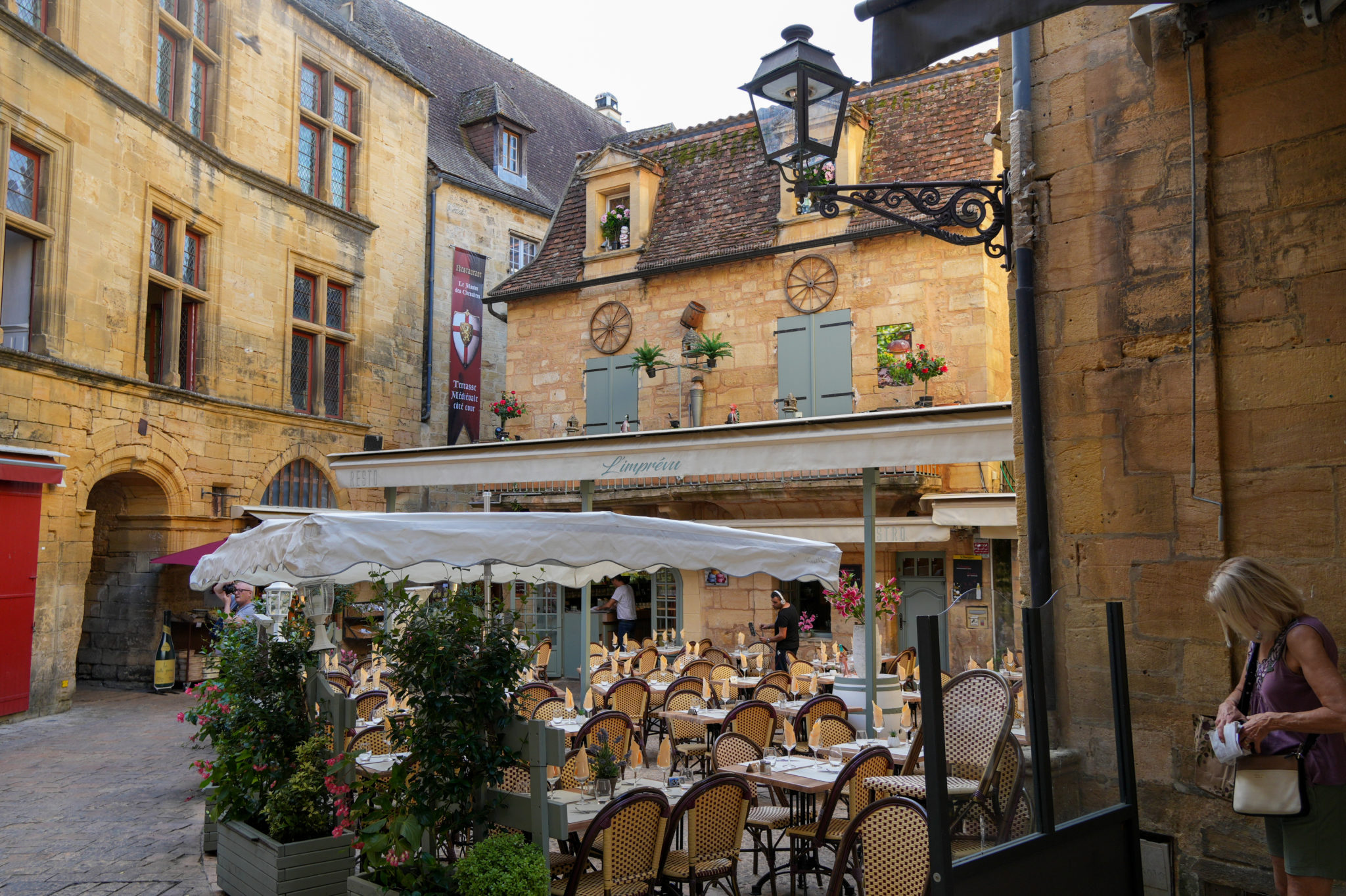
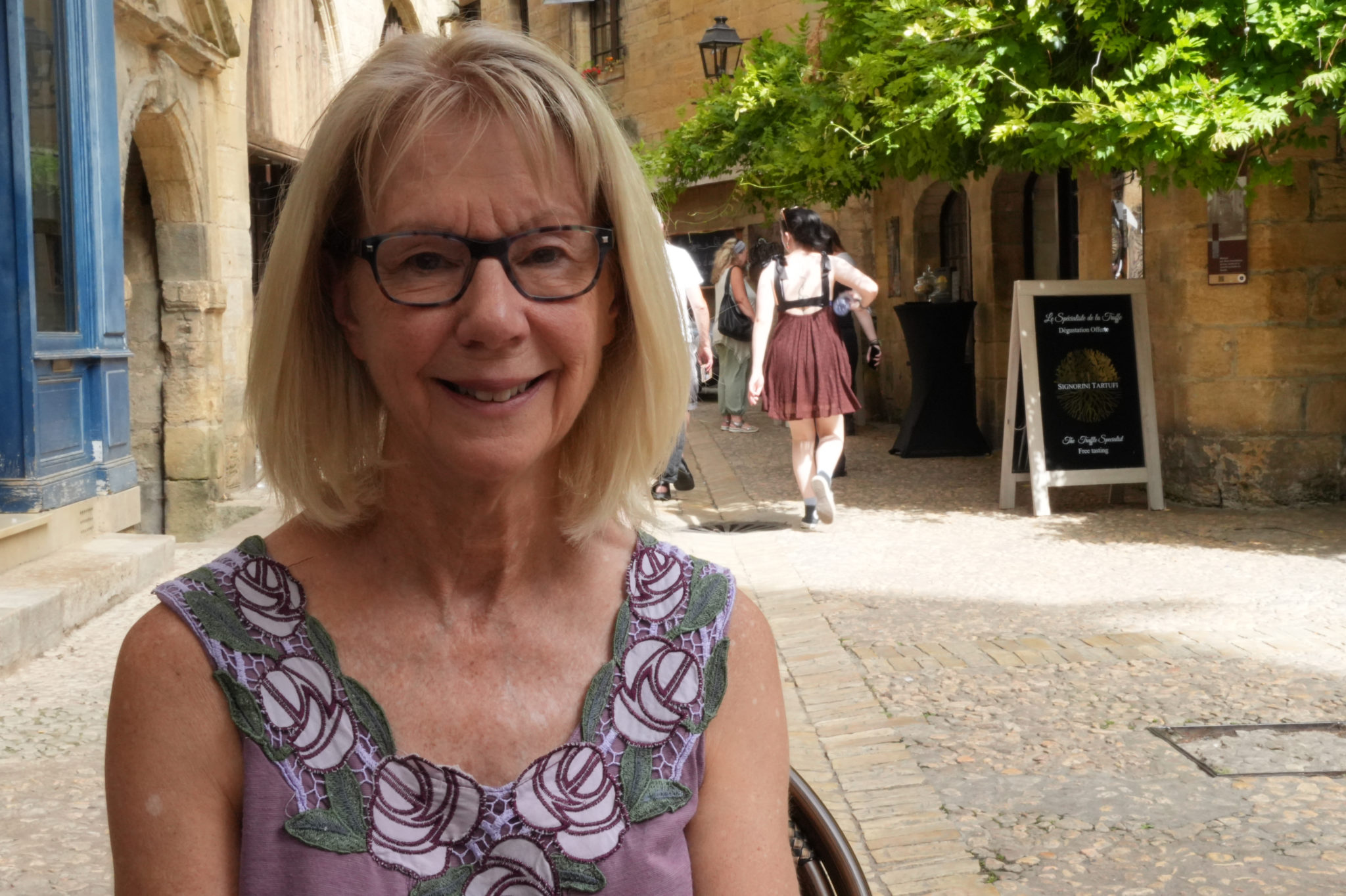
We spent ten Euros to take this elevator to the top of a tower for a view of the city. Not a good decision. The commentary was entirely in French although presented as multi-language.
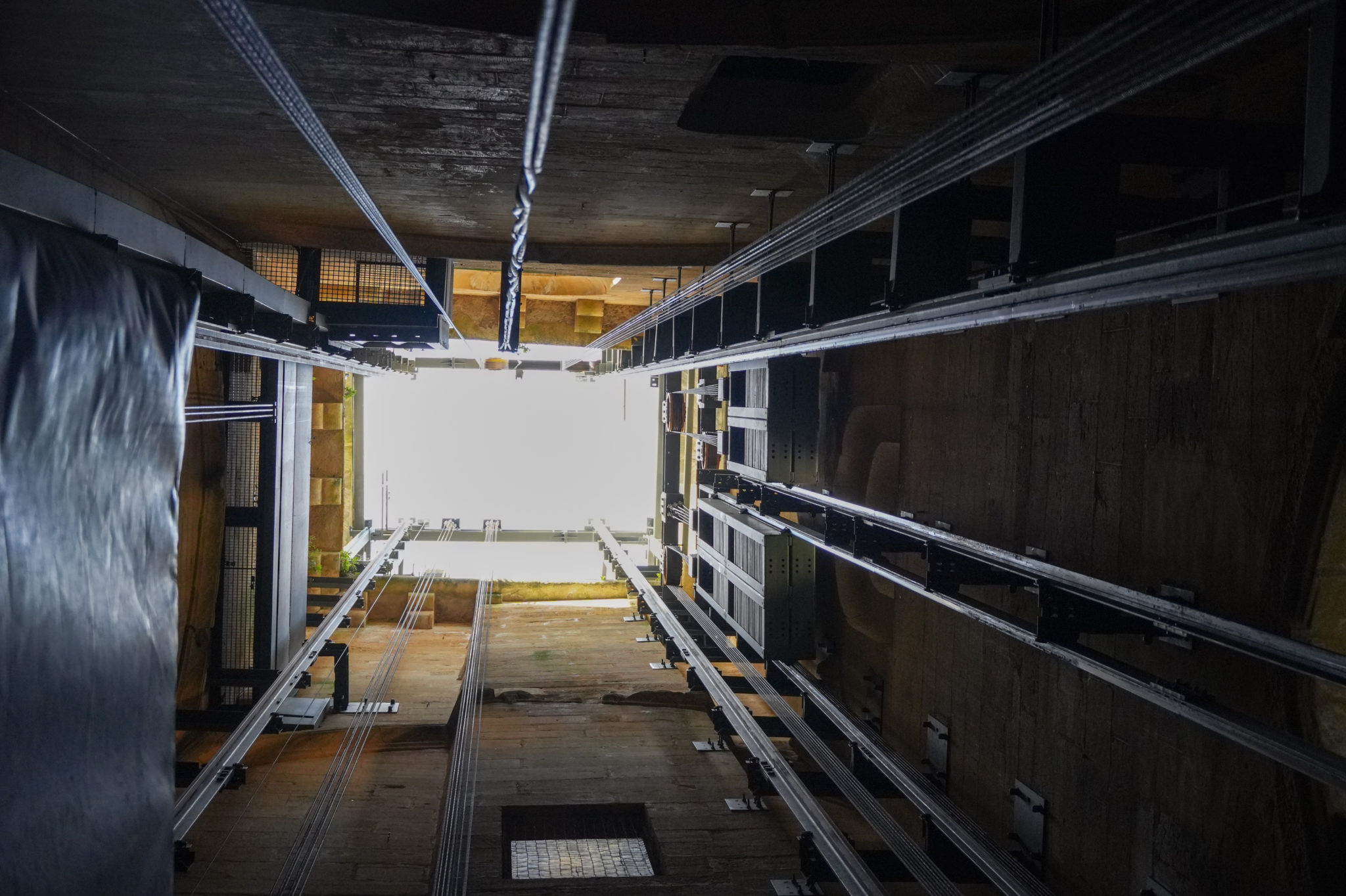
I wonder what this alcove was used for?
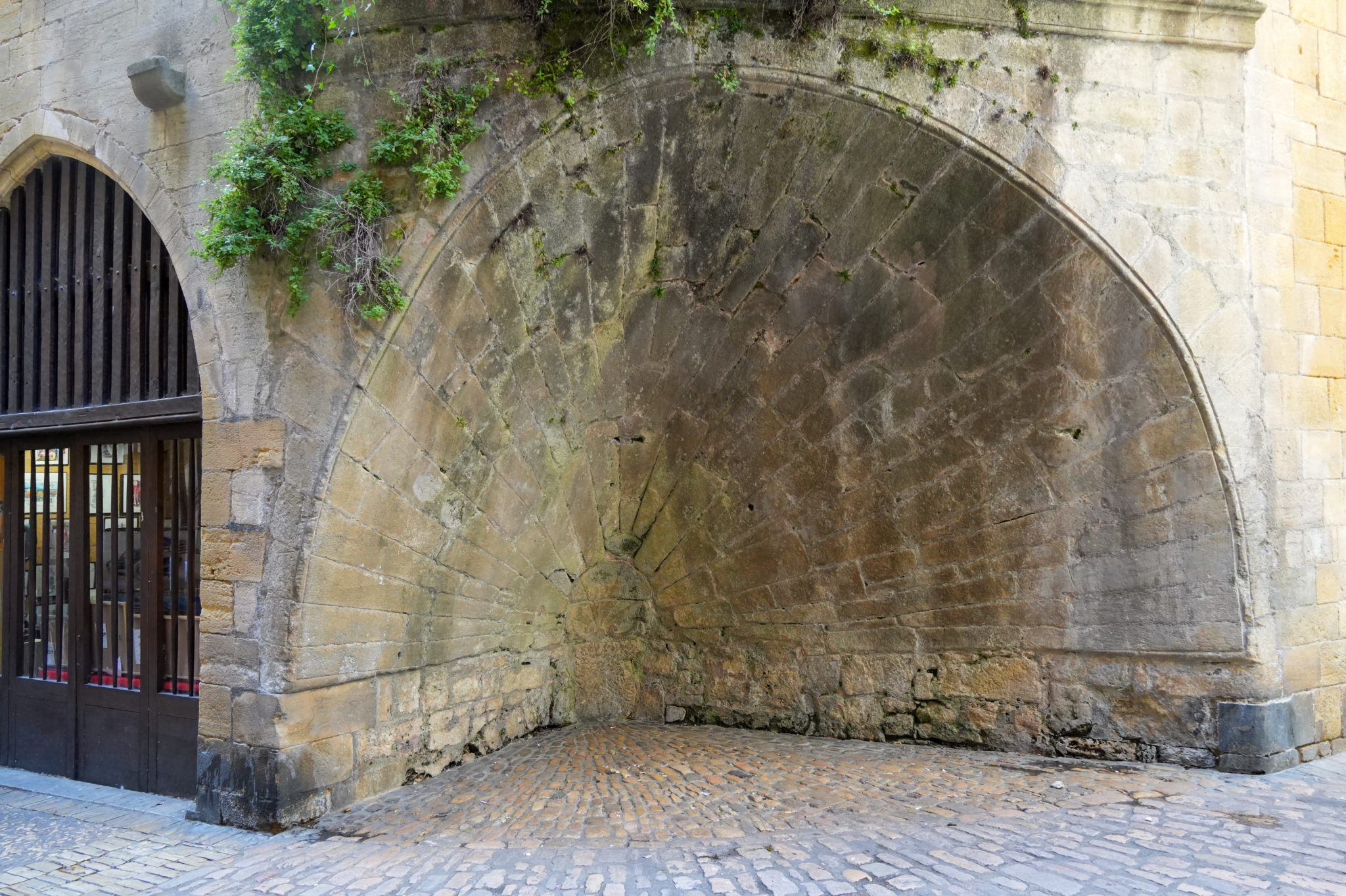
A nice car, a Bugatti I think, promotes a shop that sells posters similar to the one at left.
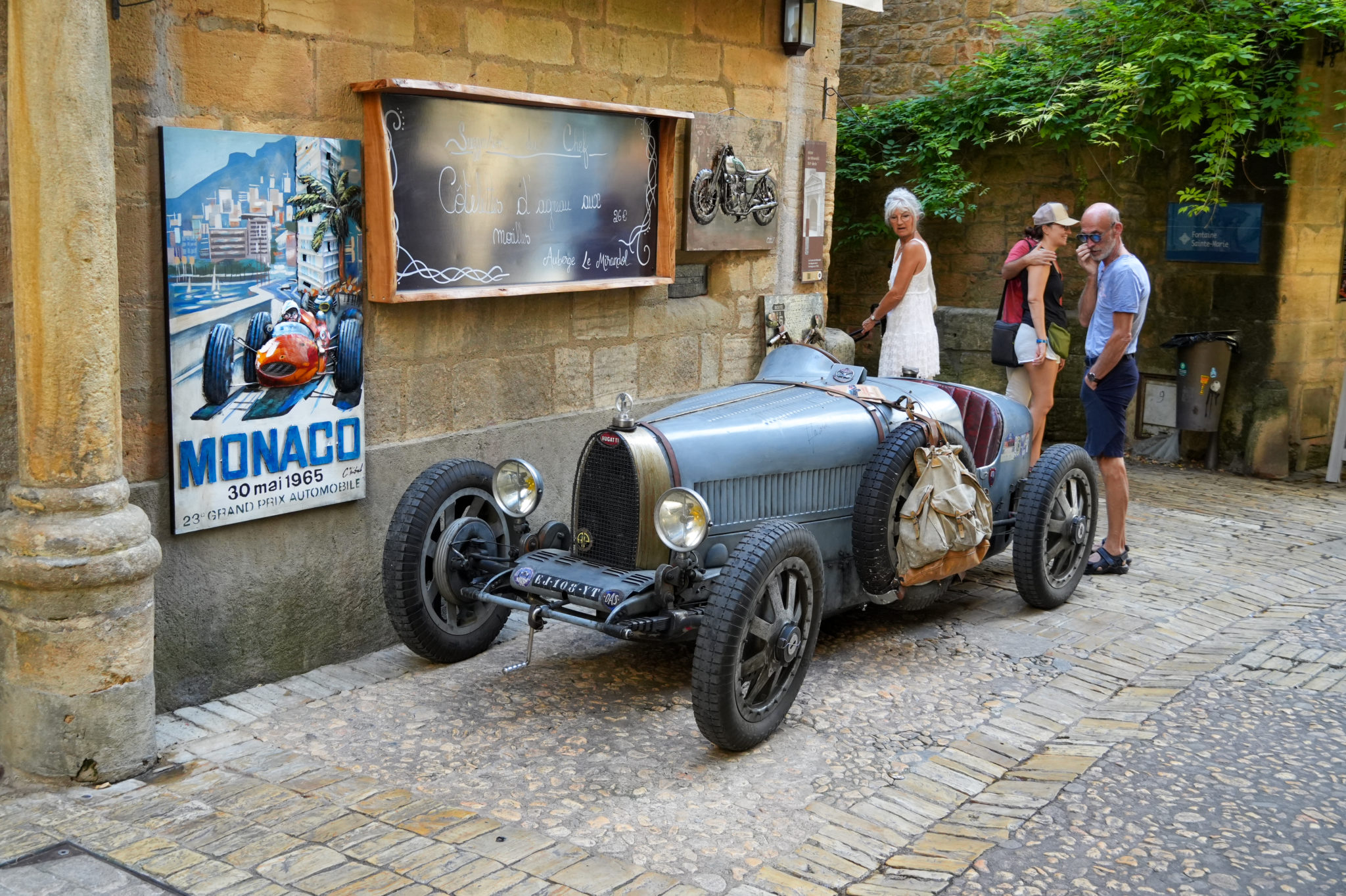
St. Mary’s fountain. She’s the one at the far back. That’s Mary Anne in front.
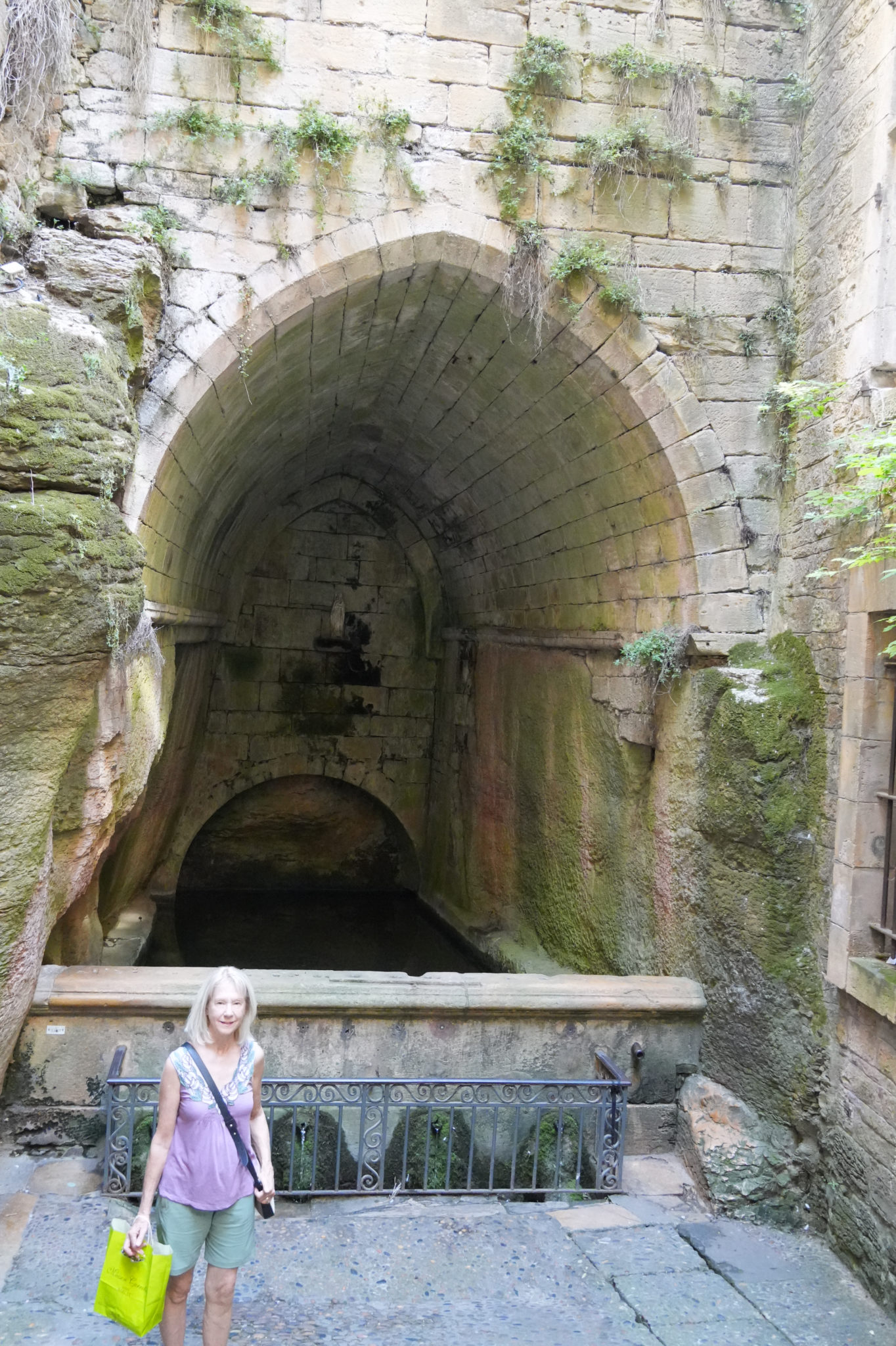
The Dordogne is the center of the Foie Gras industry. These happy geese don’t know what fate holds for them.
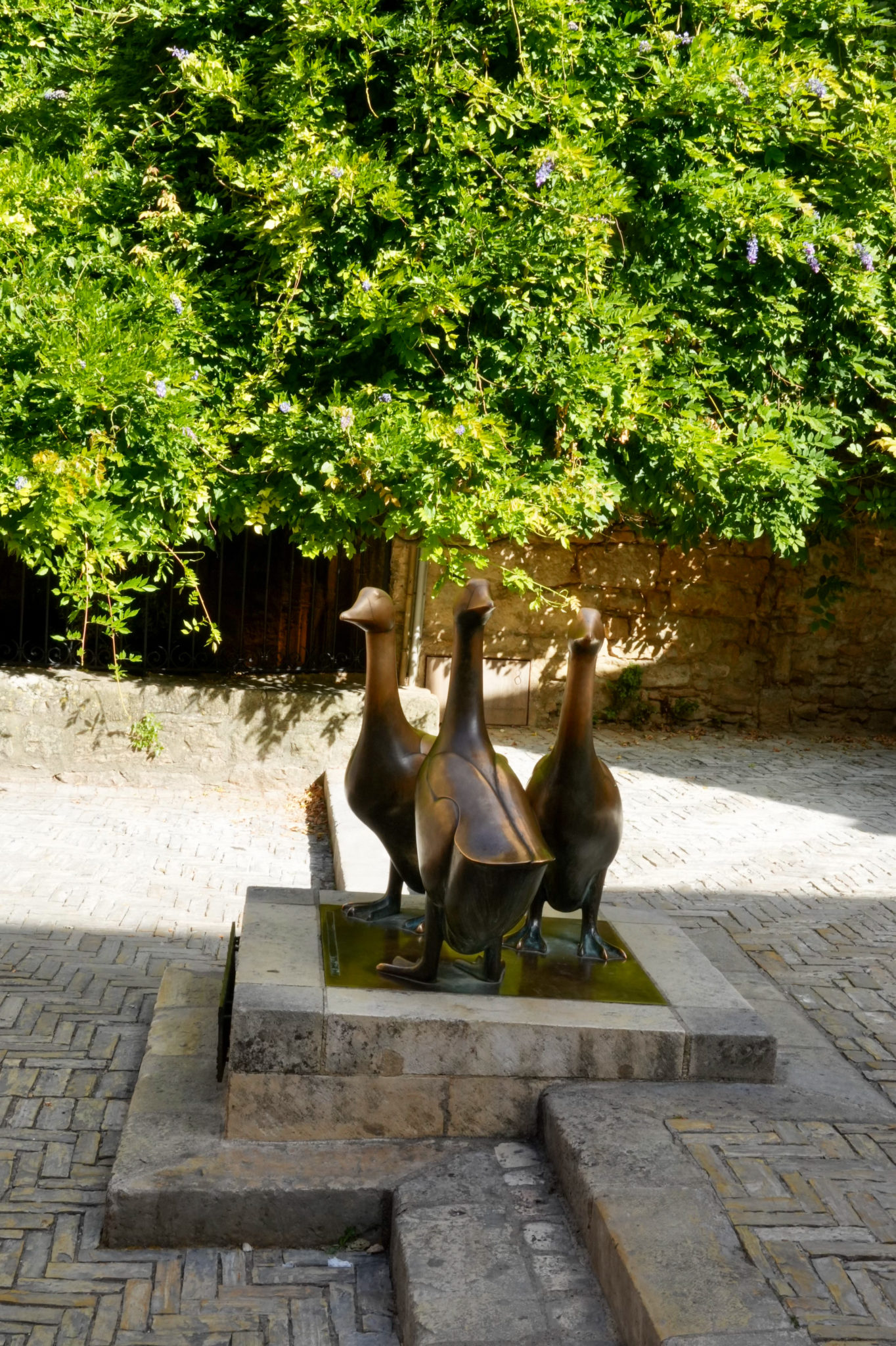
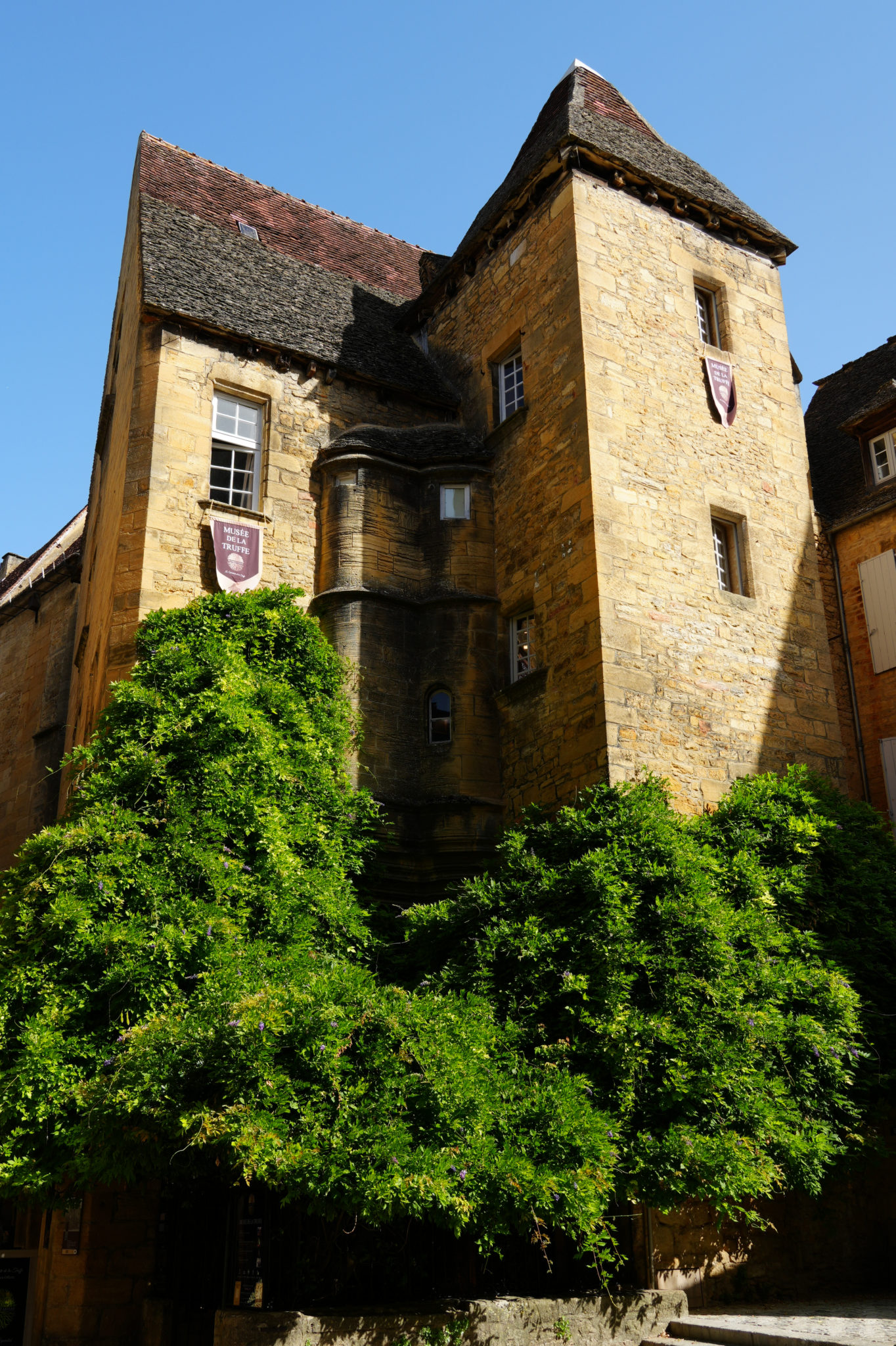
Many roofs are made of local limestone. Some call this Thackstone roofing.
The stone is startlingly heavy, about 1500 pounds per square yard, but will last over 300 years. An essential part of the roof is the peaked vents. They allow in air that fosters lichen growth on the underside of the stones. The lichen grows between the stones and creates a waterproof seal.
